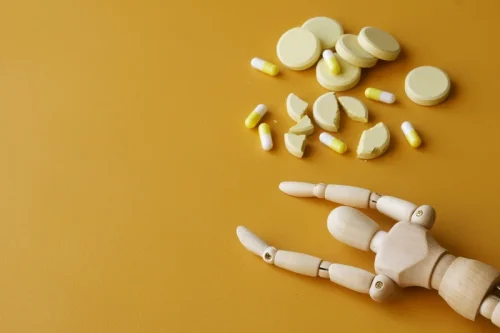
Many alcohol rehab programs help to manage co-occurring disorders, such as alcoholic polyneuropathy. A program that caters to co-occurring disorders ensures that the alcoholism is being treated and so are any other medical or mental health issues. Medical, mental health, and substance abuse providers all work together to form and carry out a treatment plan that helps to manage all disorders at the same time. Fennelly and colleagues evaluated the response to vitamin therapy in 29 individuals with alcohol-related neuropathy [30].
Alcoholic Myopathy
Electrical nerve stimulation sends a small electrical current through the skin and nerves that can help with sensitivities and pain, making it an option for treatment. Alternative therapies like chiropractic care, body manipulation, acupuncture, meditation, and massage therapy can be helpful in managing pain and symptoms of alcoholic polyneuropathy. The main goal of a treatment program for alcoholic polyneuropathy is to improve quality of life and offer relief from symptoms. Nine studies reported EMG findings in alcohol-related peripheral neuropathy patients.
- These programs include therapy, counseling, and education on substance abuse and its impacts.
- They work to send signals throughout the central nervous system and the rest of the body.
- The most effective strategy to prevent further neurologic deterioration is for the patient to reduce or discontinue alcohol abuse.
- The main goal of a treatment program for alcoholic polyneuropathy is to improve quality of life and offer relief from symptoms.
- Navarro et al. (1993) showed that nearly half of the alcohol-dependent patients without AAN symptoms and any aberrations in electrophysiologic studies presented abnormal SSR results [163].
Signs and symptoms of alcoholic neuropathy
This study is reported in accordance with the preferred reporting items for systematic reviews and meta-analysis (PRISMA) guidelines [7]. Statistical calculation of pooled proportions was conducted in R language, using the default settings of the “meta” package and the “metaprop” function with a random effects model [8]. Early diagnosis and treatment make it more likely that you will be able to recover.
Alcoholic polyneuropathy
Risk factors for developing alcoholic neuropathy include the amount and duration of alcohol consumption, nutritional deficiencies, and individual susceptibility to alcohol’s neurotoxic effects. People who consume large quantities of alcohol over an extended period, who would qualify as alcoholics, are at higher risk, especially if their diet lacks vital nutrients needed for nerve function and repair. Genetic factors may also play a role, making some individuals more prone to alcohol-related nerve damage than others. Additionally, overall physical health, liver function, and concurrent use of other substances can influence the onset and severity of neuropathic symptoms. Behse & Buchthal [31] compared 37 Danish patients with alcoholic neuropathy with six patients with nonalcoholic post gastrectomy polyneuropathy. The authors noted that Danish beer at the time of the study contained thiamine and vitamin B6.
- Nerve damage can also make it difficult for you to carry out the functions of daily life.
- Izumi et al. [73] also demonstrated that a single day of ethanol exposure in rats on post natal day 7 results in significant apoptotic neuronal damage throughout the forebrain after 24 h of ethanol administration.
- Many people who use alcohol neglect their diet, either eating too much or too little of essential nutrients important to maintaining good health.
- If you have a diagnosis of alcoholic neuropathy, abstinence from alcohol is the primary treatment to restore nerve function.
- A systematic review suggests that 46.3% of people who engage in chronic heavy alcohol use have alcoholic neuropathy.
However, alternative therapies do not have side effect and tackle nutritional deficiencies and oxidative stress. Intensive research has been done on medications like alpha-lipoic acid, benfotiamine, acetyl-l-carnitine, and methylcobalamin. Other botanical or nutrient therapies include myo-inositol, alcohol neuropathy stages vitamin E, topical capsaicin, and N-acetylcysteine. The onset of ALN is intensified by several risk factors such as malnutrition, thiamine deficiency, direct and indirect toxic effects of alcohol and its metabolites on nerve fibers, and genetic predispositions of patients [55, 139,140,141,142,143].
Tactile and thermal sensitivity tests

Alcoholic polyneuropathy is progressive and gets worse over time, as the damage to the nerves increases with continued alcohol abuse. The problems that alcoholic neuropathy causes with muscle weakness, balance, and coordination can make a person more at risk for falling down and getting injured. Not being able to tell when things are too hot because of the way the nerve damage interferes with the ability to sense temperature changes can make one more susceptible to burns. In the same manner, numbness and lowered ability to feel pain sensations can make people more apt to cut themselves or otherwise damage the skin. Often, individuals may not even realize that they are burned or cut because they just don’t feel it, which can elevate the risk for infection.

Long-term alcohol use can wreak havoc on several vital organs and essential functions in the body. Vitamin E is used to refer to a group of fat-soluble compounds that include both tocopherols and tocotrienols. https://ecosoberhouse.com/article/essential-tremor-alcohol/ Treatment with vitamin E was found to be beneficial in the treatment of patients with diabetic peripheral neuropathy [104] and neuropathic pain in streptozotocin-induced diabetic rats [105].
- To combat these deficiencies, supplementation with vitamin B12, folate, vitamin E, and thiamine may be recommended.
- Ongoing therapy and counseling can address the psychological aspects of addiction and help develop strategies for coping with the challenges of neuropathy.
- This may be a reflection of the severity of the neuropathy in which motor nerve function is affected at a later stage.
- The latency of the last four trials was used to calculate the mean withdrawal latency from each animal in each pelvic limb.
- Treating alcohol-related nerve damage, therefore, must begin with treating a person’s alcoholism.
- Once a person has stopped drinking, they can receive continued care for their nerve damage in addition to treatment for alcohol addiction.

